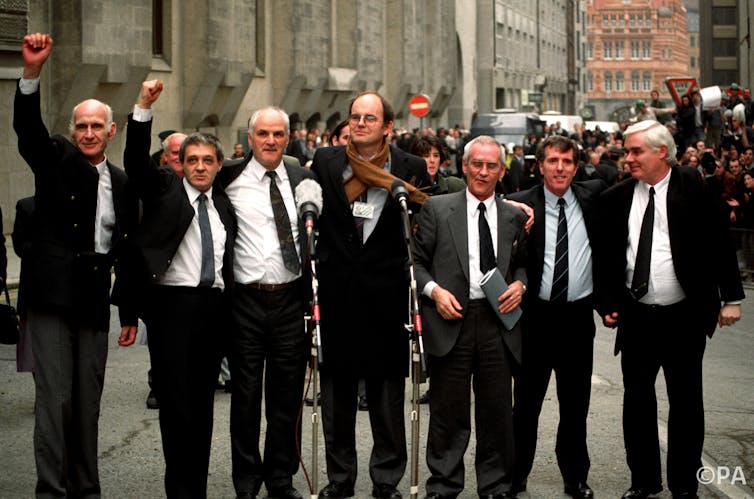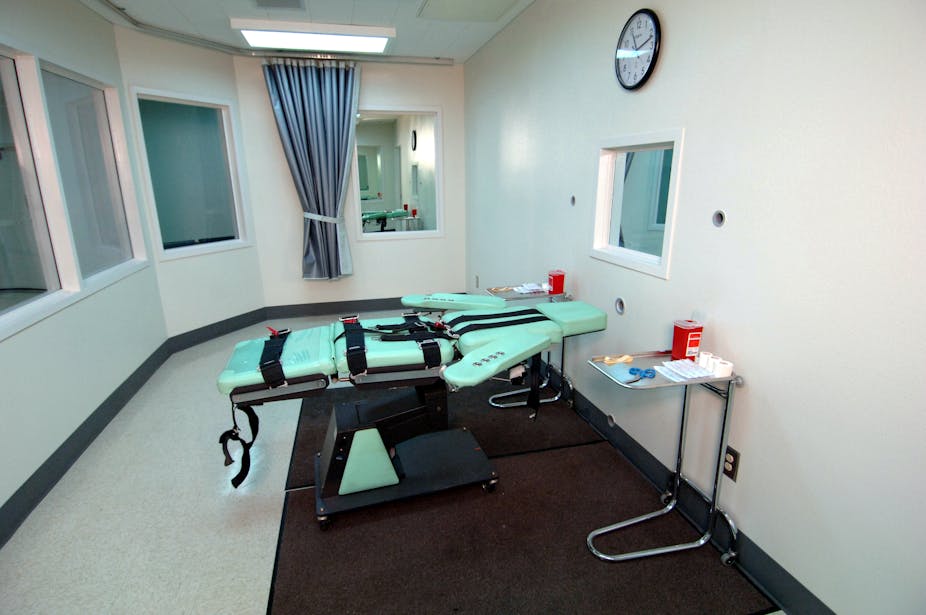On November 21, 1974, two bombs exploded in crowded pubs in central Birmingham, killing 21 people and sending the city and the country into shock. The bombings were attributed to the Provisional IRA, and a year later six Irish men were sentenced to terms of life imprisonment for their roles in planting and detonating the devices.
The Birmingham Six, as these men came to be known, steadfastly maintained their innocence, and a dedicated team of investigative journalists and lawyers slowly but surely convinced the British public that these men were telling the truth.
In dramatic scenes outside the Old Bailey in London on March 14, 1991, Hugh Callaghan, Patrick Hill, Gerard Hunter, Richard McIlkenny, William Power and John Walker had their convictions for murder quashed by the Court of Appeal. They had each spent 16 years in prison for crimes that they had not committed, and their case is one of the most notorious miscarriages of justice in British history.

There can be little doubt that if capital punishment was legal at the time of their trials, these men would have been sentenced to death. Even Lord Denning – one of the most prominent judges of the 20th Century – suggested that the Birmingham Six should have been hanged.
If they had been hanged, they would have joined Derek Bentley and Timothy Evans, among countless others, on the list of innocent people that have been executed in this country. And this is by no means the only late-20th Century case of its kind.

Just last month, Shahidul Ahmed was convicted for the murder of Rachel Manning. Ahmed is almost certainly guilty, but his conviction comes 11 years after Manning’s boyfriend was wrongfully convicted for the killing. Barri White not only suffered the loss of his girlfriend, but he also spent six years in prison after being wrongly accused and convicted of her murder.
Capital punishment was abolished in England, Wales and Scotland in 1965, and abolished in Northern Ireland in 1973. Since then, we have not run the risk of sentencing innocent people to death, but innocent people have been, and continue to be, sentenced to death with alarming frequency in the United States.
One in ten exonerated
Since 1976, 1,348 people have been executed in the US, but in that time 136 people have been exonerated from death row on the grounds that they categorically could not have committed the crime for which they were sentenced to death. In other words, for every 10 people on death row who are executed, at least 1 person on death row is innocent.
While some might argue that these exonerations prove that the appeals system is working, it is more than likely that innocent people have been executed in recent years. Just read the cases of Troy Davis, Cameron Todd Willingham, and Carlos DeLuna for starters.
There are many reasons why innocent people might be wrongly sentenced to death, and the One For Ten documentary series – taking its title from the statistic that for every 10 people executed, one person is exonerated – recently highlighted the stories of innocent people who found themselves facing execution. Some people falsely confess to the crime under pressure from the police.
In other cases, the prosecution might fail to reveal evidence that exculpates the defendant. Other people have been wrongfully convicted purely because of the colour of their skin. In far too many cases, the suspect is simply too poor to afford a decent defence lawyer, and is sentenced to death because of inadequate representation in court.
The One For Ten interviews with people exonerated after being sentenced to death make for harrowing viewing, and if these stories do not convince people of the folly of retaining the death penalty, then perhaps nothing will. Prominent among those 10% is Ray Krone, who was the 100th person to be exonerated from Death Row in the US.
Ray Krone’s story
Krone was sentenced to death in 1992 for the kidnapping and murder of Kim Ancona in Phoenix, Arizona. The case centred on bite marks that were found on the victim’s body, and at the trial the prosecution presented a so-called expert who testified that the bite marks on the body matched the impression that Krone had made on Styrofoam when he had been arrested.

This testimony was debunked in 1992, and DNA evidence proved that Krone could not have committed the crime. DNA evidence from the crime scene matched that of Kenneth Phillips – a man who lived near the bar where Ancona had been killed, and who had a history of violence against women.
Krone, like so many other death row exonerees, now travels the world to share his experiences. In his words: “I was a Boy Scout, a postman … I was in the Air Force. If they could do it to me, they could do it to anyone.” It is worth bearing these words in mind the next time a British newspaper or politician calls for the reintroduction of the death penalty in the UK.

